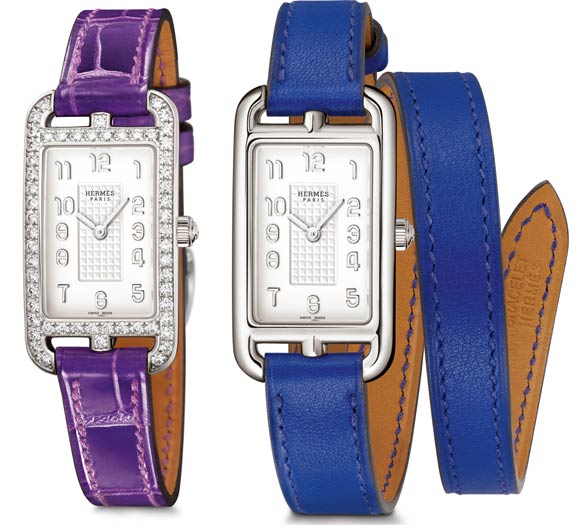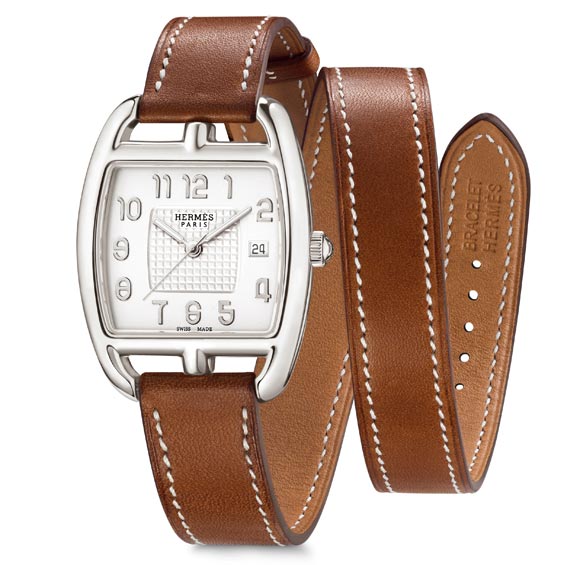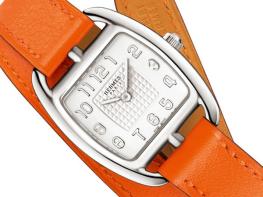Silver was discovered around 6,000 years ago and has been used by the ancient South Americans (Argentina is named after silver, aka argentum in Latin), Chinese, Egyptians, Greeks and Romans. Due to its beauty and unique brilliance, silver was a sought-after and often-used material in jewelry, coins, tableware and more.
Pocket watches were made of silver in the early years of the watch industry and silver wristwatches were also very popular in the early 1900s. The problem with silver was that it tarnished and changed color, requiring the owner to clean the watch regularly.
Some watch companies, dissatisfied with the tarnishing (due to exposure to sulphur compounds and other chemicals, as well as the oxidization of the copper in the silver alloy used), completely abandoned silver, preferring to use stainless steel, gold, platinum and other metals. Hermès, however, continued to use silver, one of its iconic metals, up until 1998. The general dissatisfaction of customers with the way the silver changed color led Hermès to discontinue silver completely in watches, though it has continued using silver in its jewelry collections.

This year at BaselWorld, Hermès has reintroduced a new silver alloy, specifically developed for watches. The result is the beauty of this precious metal in a package that won’t tarnish like silver did before.
“The silver we know, the 925 alloy, tends to oxidize and tarnish -- although this is not problematic for Hermès jewelry where this process brings a pleasant patina to the products, it is less charming for the watches,” Philippe Delhotal, Artistic Director of La Montre Hermès, explains. “Customers find it unsatisfying and not on par with the level of quality Hermès expects for its products. Consequently, in 1998, La Montre Hermès decided to stop production of the silver line, including the Nantucket.”
But, as Delhotal explains, silver is part of the DNA of Hermès. “We have produced watches and jewelry in silver since 1927 and felt that the material was missing in our watch portfolio,” he says. “After two years of research working with a Swiss company, we have developed a new silver alloy which responds to this need. Hermès has two years of exclusivity to use this alloy for its watch collection.

The new alloy removed the copper that caused oxidation and replaced it with silver and a mix of confidential ingredients. The new alloy is called 970 Silver+ as it is 97% pure silver.
“It was specially developed to ensure that the silver maintains its characteristic glow,” Delhotal adds. “Silver is a precious material that women love and it gives a bright and light touch to a watch. Silver is a bit more complicated to work with than other metals as the silver alloy is a more supple material (since the copper was removed). This especially complicates setting diamonds within the metal and it requires a certain expertise.”
Hermès is using this new alloy first in its Tonneau and Cape Cod Nantucket models, available in non-set or gem-set versions. If the new silver watches are well received, you can expect 970 Silver+ to appear in other Hermès collections in the future.
“We are debuting a new and exclusive alloy that not only reduces the risk of tarnishing, but that reinvents an emblematic collection from Hermès’ past,” concludes Delhotal.
Silver is a fantastic metal for watch cases and it’s great to see Hermès reintroducing it back into watches.








